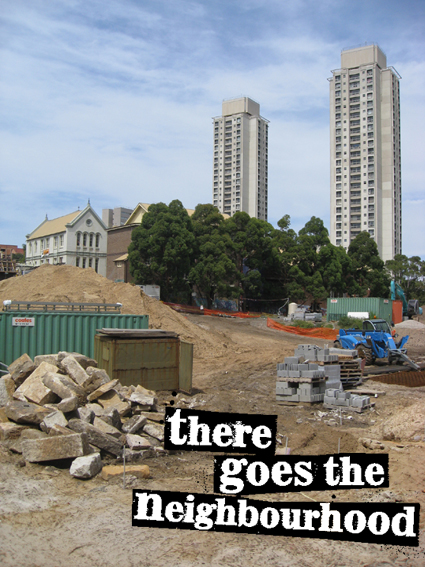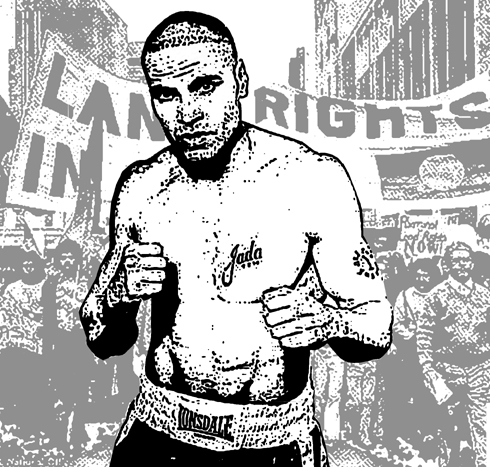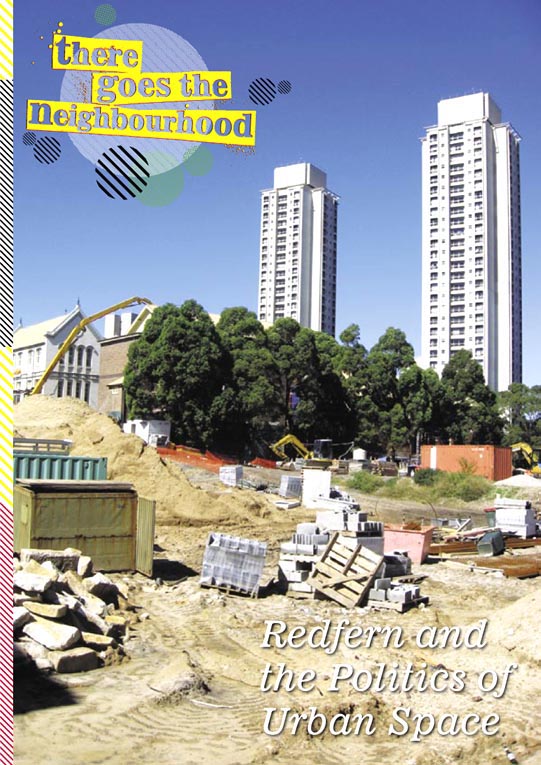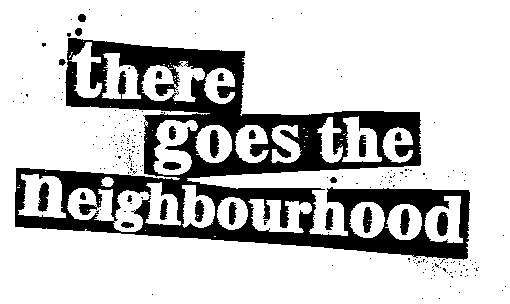
There Goes the Neighbourhood is an exhibition, residency, discussion and publishing project for May 2009. The central element of this project will be an exploration of the politics of urban space, with a focus on Redfern, Sydney. The project will examine the complex life of cities and how the phenomenon of gentrification is altering the relationship between democracy and demography around the world. While urban change itself is not always a bad thing, gentrification often happens at an accelerated rate, out pricing the lower income and marginalized communities from the neighbourhood and dislocating them from their existing connections to urban space. The project brings together artists from Australia and around the world whose work addresses these issues.

White man got no dreaming, Michael Rakowitz (2008)
The Politics of Urban Space...
What exactly is the mode of existence of social relationships?... The study of space offers an answer according to which the social relations of production have a social existence to the extent that they have a spatial existence; they project themselves into a space, becoming inscribed there, and in the process producing that space itself
– Henri Lefebvre.
There Goes the Neighbourhood is the ironic chorus to the 1992 Body Count song which lamented the invasion of the once poor (and Black) into the neighbourhood of the rich (and white). But an alternative destruction of “The Neighbourhood” can happen when the poor get pushed out of their local community as part of the process of gentrification. This issue is particularly relevant for the suburb of Redfern, an inner city suburb of Sydney which has been home for a large working class and Indigenous community, and which is undergoing a process of rapid development and change.
The Block, Redfern, has been described as the "Black Heart" of Australia and occupies a unique place within Sydney's urban landscape as a centre for the Indigenous community. It was the site for the Aboriginal Tent Embassy, and has been the gathering point for many protests and community events. Just minutes from the second busiest train station in Sydney are the open camp fires and communal use of public space of the community on The Block. The Aboriginal Housing Company has had a long standing dream, just recently given the green light by the government to build The Pemulwuy Project; a new community housing project and cultural centre for Redfern's Aboriginal community. Redfern is also home to a number other non-Indigenous community housing projects such as the Department of Housing buildings (known as the "Suicide Towers") which the government is trying to redevelop. The suburb was once a strong working class neighbourhood and was the starting point for the 1917 general strike for a shorter working week: but in the 1980s the rail yards were closed down and transformed into a new cultural centre (where one of the exhibition venues Performance Space is based). Redfern grabbed headlines in 2004 when riots erupted when the police killed a 17 year old Aboriginal boy after chasing him in police cars as he rode his push-bike home. In that same year the Redfern-Waterloo Authority was established - a special government committee to oversee the rapid development and gentrification of the area. Redfern thus involves a complex, contested and controversial overlapping of uses of urban space.
There Goes the Neighbourhood is an exhibition, residency, discussion and publishing project for May 2009. The central element of this project will be an exploration of the politics of urban space. It will explore the complex life of cities and how the phenomenon of gentrification is altering the relationship between democracy and demography around the world. While urban change itself is not always a bad thing, gentrification often happens at an accelerated rate, out pricing the lower income and marginalized communities from the neighbourhood and dislocating them from their existing connections to urban space.
As Henri Lefebvre reminds us “the social relations of production have a social existence to the extent that they have a spatial existence; they project themselves into a space, becoming inscribed there, and in the process producing that space itself”. The tussle over space is always one over the social relationships which are generated within the logic of place: revolving around people occupying, owning, seizing, developing, losing or transforming this space.
The project will bring together a smallish group of artists who have worked in various artistic projects which have explored the relationship between community and space and invite them to develop these issues further in the contested local environment of Redfern.

There Goes The Neighbourhood: Redfern and the Politics of Urban Space
To download a PDF of the book click here
There Goes the Neighborhood begins with a close study of Redfern before expanding into international examples to provide a detailed exploration of how the phenomenon of gentrification is altering the relationship between democracy and demography around the world. This book has been published in tandem with an exhibition of the same name and many of the contributions come from participating artists in the exhibition: Brenda L. Croft (Australia), 16beaver (USA), Daniel Boyd (Australia), Temporary Services (USA), Jakob Jakobsen (Denmark), Lisa Kelly (Australia), SquatSpace (Australia), Claire Healy and Sean Cordeiro (Germany/Australia), Evil Brothers (Australia), You Are Here (Australia), Michael Rakowitz (USA), Miklos Erhardt and Little Warsaw (Hungary), Bijari (Brazil) and Democracia (Spain). The book also includes contributions from key thinkers about the complex life of cities such as the Situationists, Mike Davis, Brian Holmes, Gary Foley and Elizabeth Farrelly.
There Goes The Neighbourhood is edited by Keg de Souza and Zanny Begg from You Are Here, a Sydney based art collective which focuses on social and spatial mapping.
